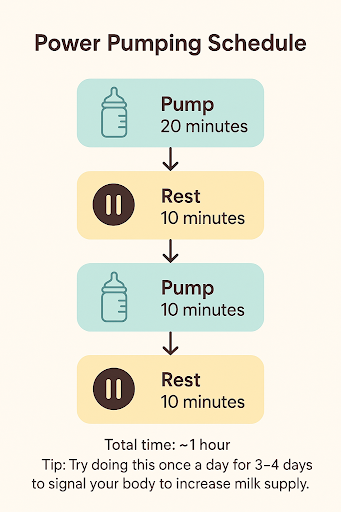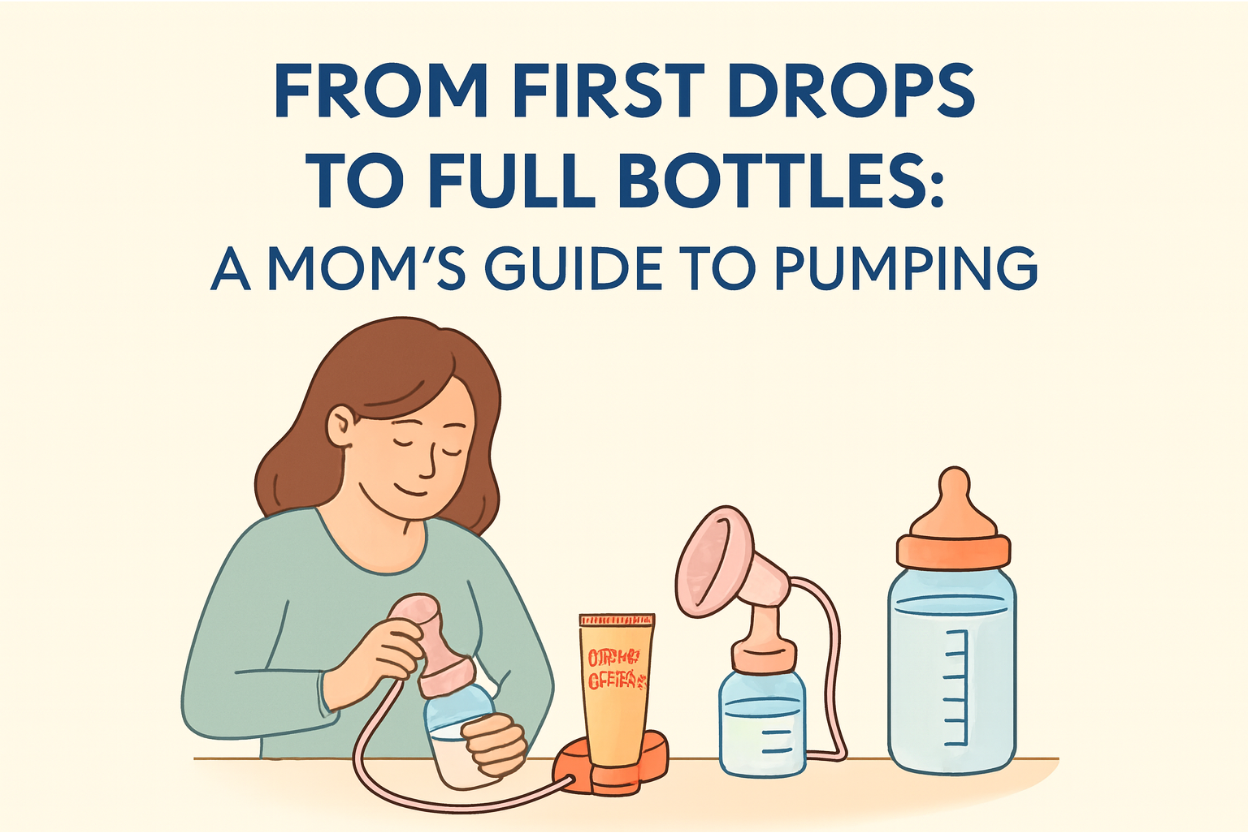Motherhood brings so many emotions — joy, exhaustion, pride, and sometimes, a little doubt.
For many new moms, pumping becomes part of the journey — whether it’s returning to work, sharing feeding duties, or simply building a backup stash.
Getting used to pumping takes time, patience, and a bit of trial and error. This guide will help you understand how to build your milk supply and choose the right pump for your needs.
1. When to Start Pumping
Every mom’s journey looks a little different when it comes to starting pumping. Some begin around 4–6 weeks postpartum, especially if they want to store milk or prepare to return to work. For others, starting earlier — even within the first few days after birth — can help them rest between feeds and gently encourage milk production.In the initial days, if you prefer not to introduce a bottle, you can use a palladai, small bowl, or spoon to feed your baby instead.
2. Keep pumping and do it often
The milk supply works on a simple rule: supply and demand. Your body makes more the more you pump or feed it.
- Exclusive Pumping Moms: In the first few weeks, try to have 8–10 sessions a day.
- Breastfeeding moms: Pump once or twice in the morning to build up a small supply.
It’s more important to be consistent than to be perfect. Short, regular sessions are better than long, random ones.
3. Warmth and Massage Help
Before pumping, put a warm compress on your breasts or massage them for a few minutes. With this, the milk flows better and there is less pain.
Try this:
- Put a warm towel on your breasts.
- Lightly rub in circles.
A few minutes of preparation can make a big difference in comfort and output.
4. Don’t Worry About Early Output
Getting only a few drops at first is normal. Your body is still getting used to the beat. Be patient and keep doing what you’re doing; your supply will grow over time.
5. Stay Hydrated and Eat Well
Your body requires energy to produce milk. Keep a water bottle nearby and sip from it all day.
Eat balanced meals that include oats, flaxseeds, almonds, and protein. Lactation supplements can assist, but the most important things are staying hydrated, eating well, and getting enough sleep.
6. Try Power Pumping
If your supply goes down, power pumping can help. It resembles cluster feeding, which signals your body to create more milk.
Try this routine once daily for a few days:

It’s a good method to give your body a little push.
What Type of Breast Pump Should You Buy?
Every mom’s life is special and so are her pumping needs. This is how the three most common types compare:
| Type | How It Works | Best For | Pros | Cons |
| Electric Pump | Runs on motorized suction (single or double). | Moms who pump often or are returning to work. | Fast, efficient, adjustable suction, some wearable options. | Costly, needs power, can be noisy. |
| Manual Pump | Hand-operated lever that creates suction. | Occasional pumping or travel. | Affordable, quiet, portable, no power needed. | Slower, tiring on the hands, less efficient for daily use. |
| Haaka Pump | Silicone pump that uses gentle suction. | Collecting milk from the other side while nursing. | Simple, silent, easy to clean, inexpensive. | Not for exclusive pumping, limited suction control. |
Many parents use two types of milk collection devices when nursing their babies: an electric pump at home and a Haaka.
7. Make a Quiet Place to Pump
Make a peaceful, comfortable place to relax. Seeing a picture of your baby or listening to gentle music can help you let down. The milk flows more easily when you are calm.
8. Keep milk safe
Make sure to write down the date and time you expressed your milk. Use the 4-4-6 rule:
At room temperature, it can last up to 4 hours.
In the fridge for up to four days.
The freezer can keep it for up to six months.
Use the oldest milk first and rotate it to reduce waste.
9. Check and clean the parts of your pump
After each use, wash all the parts that come into contact with milk and sanitize them often. Over time, valves and membranes can wear out, which can make suction less effective. Replacing them every few months can help.
10. Get Help When You Need It
If you’re having trouble with supply or comfort, see a lactation expert. Changing the size of the flange or how you do things can have a big effect.
🤱 Mom-to-Mom Tips
Every mom’s journey looks a little different — and that’s perfectly okay. What works for one may look different for another, and that’s the beauty of shared experiences.
Here’s what a few moms from our community had to say from their own pumping journeys:
Janani says:
“Hey! Regarding the point about not starting till week 4–6, my lactation consultant and the labour ward nurses insisted I start pumping right away so that I could get some rest in between.
In the initial days, if you don’t want to introduce a bottle, you can use a palladai, small bowl, or even a spoon to feed the baby.”
Moazza shares:
“I’ve noticed that many older family members or caregivers don’t really believe in the idea of pumping. The common advice is usually ‘make sure the baby latches,’ which can unintentionally put pressure on new mothers.
For colostrum, mothers are often encouraged to pump or feed right after delivery. And for anyone who’s had an emergency C-section — it’s completely normal if your milk supply takes a few days to come in. There’s nothing to worry about — your body will catch up.”
✨ Hearing from moms who’ve been there reminds us — there’s no single right way, only your way.
The Bottom Line
Pumping takes time, patience, and a lot of love, but every drop you provide shows how much you care and how dedicated you are. The best pump for you is the one that fits your lifestyle, whether it’s an electric pump for convenience, a manual pump for simplicity, or a Haakaa for easy collection.
Keep in mind that there is no one “perfect” way to feed your kid; only the way that works best for you. And you’re already doing a great job with that.
